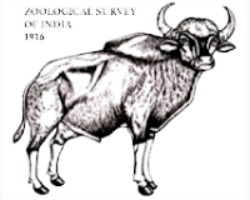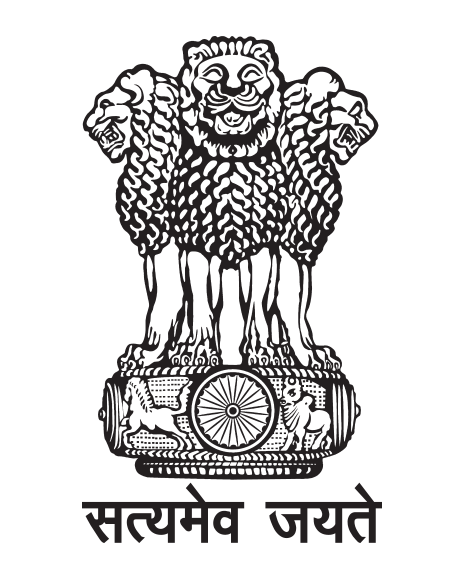
Central DNA Laboratory Central DNA Laboratory
Centre for DNA Taxonomy, Molecular Systematics Division
Dr. Vikas Kumar, Scientist E, O/C &Div in-charge
Staff Strength
|
Sl No. |
Staff Name |
Designation |
Experience |
Expertise |
|
1. |
Dr. Vikas Kumar |
Scientist E, officer In-charge |
20 years |
Molecular phylogeny and DNA barcoding, Mitogenoms, eDNA metagenomics |
|
2. |
Dr. Kaomud Tyagi |
Scientist D |
20 years |
Thrips Taxonomy, Molecular phylogeny and DNA barcoding, Mitogenoms, eDNA metagenomics |
|
3. |
Dr. Inderjeet Tyagi |
Scientist C |
10 years |
eDNA metagenomics, water chemistry |
|
4. |
Mr. Amit Kumar Ghosh |
Senior Zoological Assistant |
1.5 years |
Budding taxonomist |
|
5. |
Mrs. ShrutiKumari |
Senior Zoological Assistant |
1.5 years |
- |
|
6. |
Mrs. Nupur Sen |
Junior Zoological Assistant |
6 years |
- |
|
7. |
Mr. Ashik Kumar Rajak |
Field Attendent (MTS) |
8 months |
- |
About the Section:
The establishment of the Centre for DNA Taxonomy (CDT) under Molecular Systematics Division (MSD) was initiated in 2011 at the Zoological Survey of India (ZSI). The section was formally inaugurated on 19 May 2012 and could be operational in the year 2013. Apart from HQ Kolkata, eight regional centers (WRC, Pune; NRC, Dehradun; FBRC, Hyderabad; SRC, Chennai; ANRC Port Blair, EBRC Odisha, HARC Solan, and MARC Digha) are now operational to generate DNA barcode sequences of Indian fauna. As of now, the CDT, MSD, HQ has generated 7519 DNA barcode data of various animal taxa, especially the spiders, insects, amphibians, reptiles, birds and mammals. The generated DNA barcode data has contributed greatly to the global databases (GenBank and BOLD) to accelerate the systematics and evolutionary research. The section has a current holding of 13068 specimens, with about 250 species. Several externally funded projects funded by the Department of Science and Technology (DST), Council of Scientific and Industrial Research (CSIR), Indian Council of Agricultural Research (ICAR), Ministry of Environment Forests and Climate Change (MoEFCC), etc. are have been completed by the section. Morphological and molecular taxonomy, Comparative Mitogenomics, Environmental Metagenomics, eDNA matabarcoding, Gut Microbiome, etc., are some of the current thrust areas of the Centre.
Major Initiatives and future goals
1. TAXONOMIC STUDIES ON THYSANOPTERA (INSECTA)
Thrips, widely known as members of the insect order Thysanoptera, consist of two recognized suborders: Terebrantia and Tubulifera. Thrips are tiny insects, often measuring 1–3 mm in length and not easily apparent. There are an estimated 6102 documented species of thrips worldwide, with over 800 of them reported from India. Approximately 1% of these species have been identified as either pollinators, predators, pests, or carriers of plant viruses. Thrips are significant pests that can severely impede crop output through direct feeding damage and by serving as carriers of Tospoviruses (belonging to the genus Tospovirus, family Bunyaviridae). These viruses are RNA-based and are spread by thrips. They are considered to be among the most significant plant viruses. Thrips are the exclusive vectors of Tospoviruses, which impact plant species in several unrelated plant families worldwide. Their capacity to serve as carriers for these viruses has significantly impeded the agricultural industry in the last twenty years. Here at CDT MSD, we are applying integrated approach including taxonomy, DNA Barcoding, Mitogenomics, etc for rapid identification, cryptic species determination, species complexes, molecular phylogeny, etc.
2. DNA BARCODING OF INDIAN FAUNA
DNA barcoding is a molecular method where short DNA sequences from mitochondrial cytochrome c oxidase I gene are generated. These DNA barcodes work as molecular signatures of the species and can beused for speedy species identification in absence of a taxonomic expertise or even if a part of the specimens isavailable. These DNA Barcodes are of immense importance in detection of faunal elements of economicimportance, detection of cryptic species, phylogeny, etc. Apart from this, generation of DNA barcodes will be of immense importance for large scale biodiversity assessment through DNA Matabarcoding. So far, ZSI HQhas generated around 7874 DNA Barcodes pertaining to 1765 species. With more than 1 lakh describedanimal species of India, the important task is to barcodes all the faunal species available in India in the coming years.
3. ASSESMENT OF DRINKING WATER AND GROUNDWATER BIODIVERSITY FROM METROPOLITAN CITIES AND DIFFERENT STATES OF INDIA THROUGH DNA METABARCODING FOR GOOD HEALTH AND WELL BEING
Quality of drinking water is significant for human health, it is greatly influenced by different parameters including microbial population, eukaryotic diversity and chemical attributes. The data generated under this study will cater the need of the hour and will strengthen the Government of India efforts towardsthe achievement of Sustainable development goals (SDGs) as well as “ONE HEALTH” program. Herein, the drinking water and groundwater diversity specifically eukaryotic and prokaryotic along with the waterhealth in terms of carcinogenic heavy metals and physico-chemical parameters will be accessed from different metropolitan cities and states of India. The findings will not only help the potential stakeholders such as NITIAayog, Ministry of Environment, Forests and Climate Change and Subordinate Offices, Ministry of JalShakti and Subordinate Offices, United Nations for SDGs 3: Good Health and Well-being and SDGs 6:Clean water and Sanitation, World Health Organization (WHO) for policy making but it will also creategeneral awareness among the residents for their good health and wellbeing thereby establishing great societal impact.
4. ENVIRONMENTAL DNA (eDNA) BASED MEASURING AND MONITORING THE EUKARYOTIC AND PROKARYOTIC DIVERSITY OF RAMSAR SITES AS WELL AS FRESHWATER ECOSYSTEMS
For any ecosystem and biodiversity conservation research, it is important to know what is present there and how these are changing over the time. This is especially important in the wetlands ecosystems which are underexplored, most threatened and many of them have been designated as Ramsar sites. These Ramsar sites are now a day’s one of the hot-spot for researchers to document the hidden diversity and to elucidate thefactors such as anthropogenic factors and land invasion that leads to the altercations in the biodiversity profile. Environmental DNA (eDNA) based measuring and monitoring of eukaryotic and prokaryotic diversity in the RAMSAR sites with relation to surface water physio-chemical parameters is the need of the hour. Keeping inview, we will be attempting to document and monitor the eukaryotic and prokaryotic diversity with relation to the environmental variables in Ramsar sites. The outcome of these kinds of studies will be of immense importance and contribute towards fulfilling the Sustainable development goals (SDGs 14): Life belowwater and will help in the conservation of these Ramsar sites.
5. GUT MICROBIOME OF ECONOMICALLY IMPORTANT INSECTS
Insect gut microbiome plays a major role in the different physiological activities and phylogeny of insects. In insects, gut microbiota reportedly has positive and negative effects; positive being on the nutrition,protection from toxins, protection from biological parasitoids, virus transmission, honey production, etc. whilehave negative effects on the reproduction of insects causing sterility and modifying the sex ratio. Nextgeneration Sequencing methods have revolutionized the study of the gut microbiome and their predictedfunctions. In the coming year we would like to make a database of the gut microbiome of differenteconomically important insects from different host plants and geographical regions, so that, we can capitalizeon their potential for pest and vector management, conservation of pollinators, etc.











